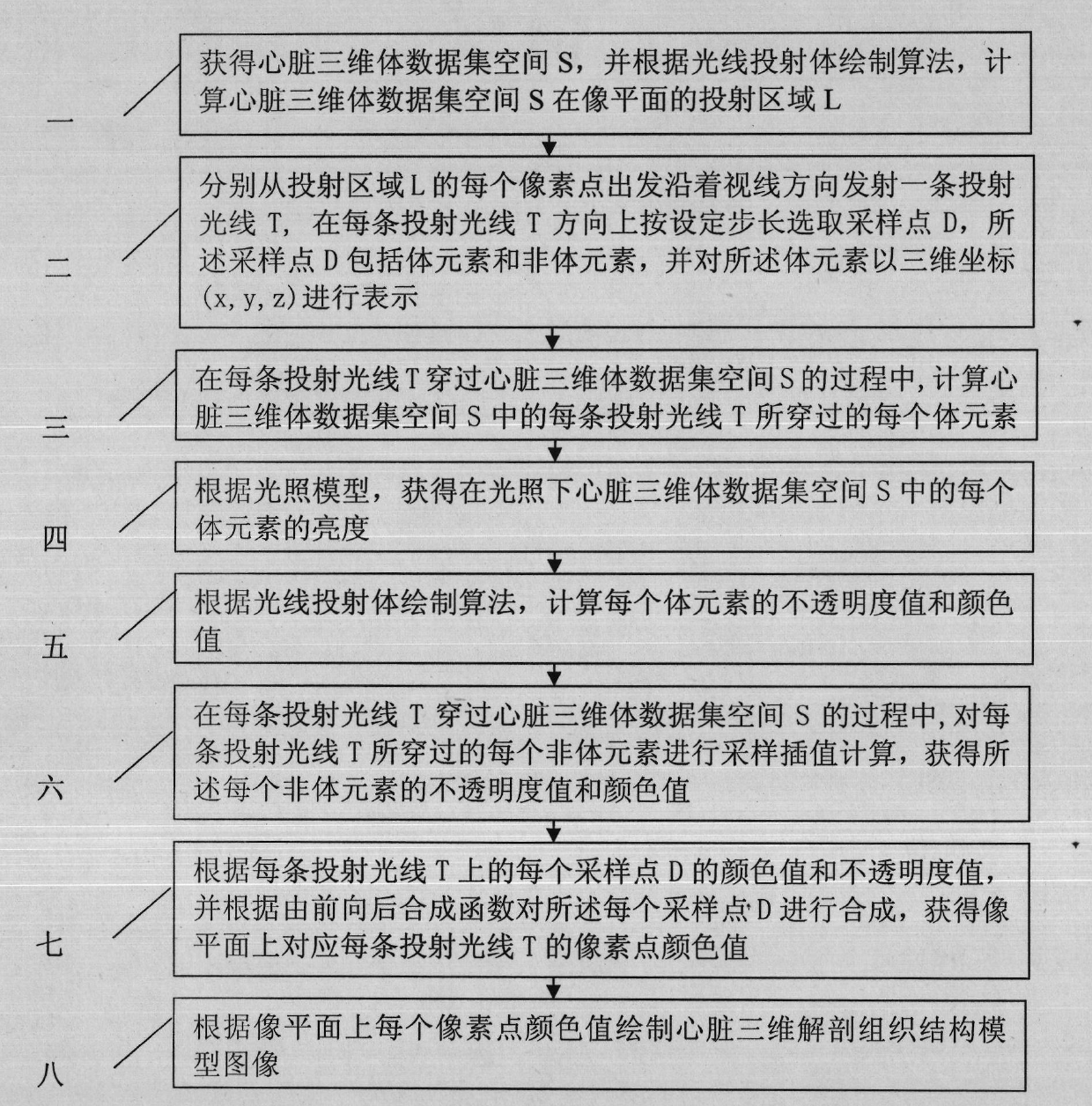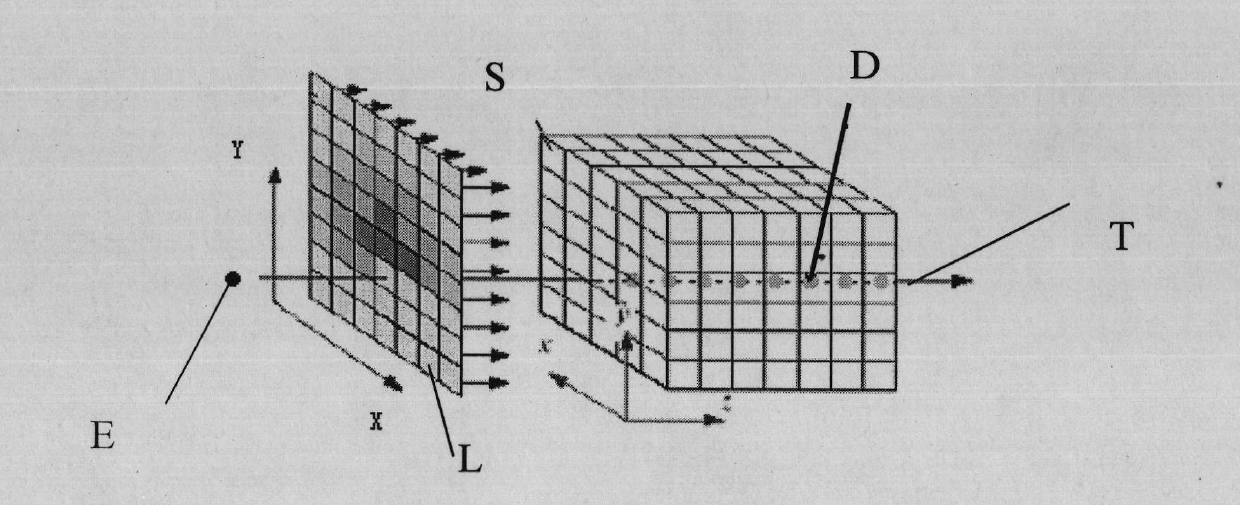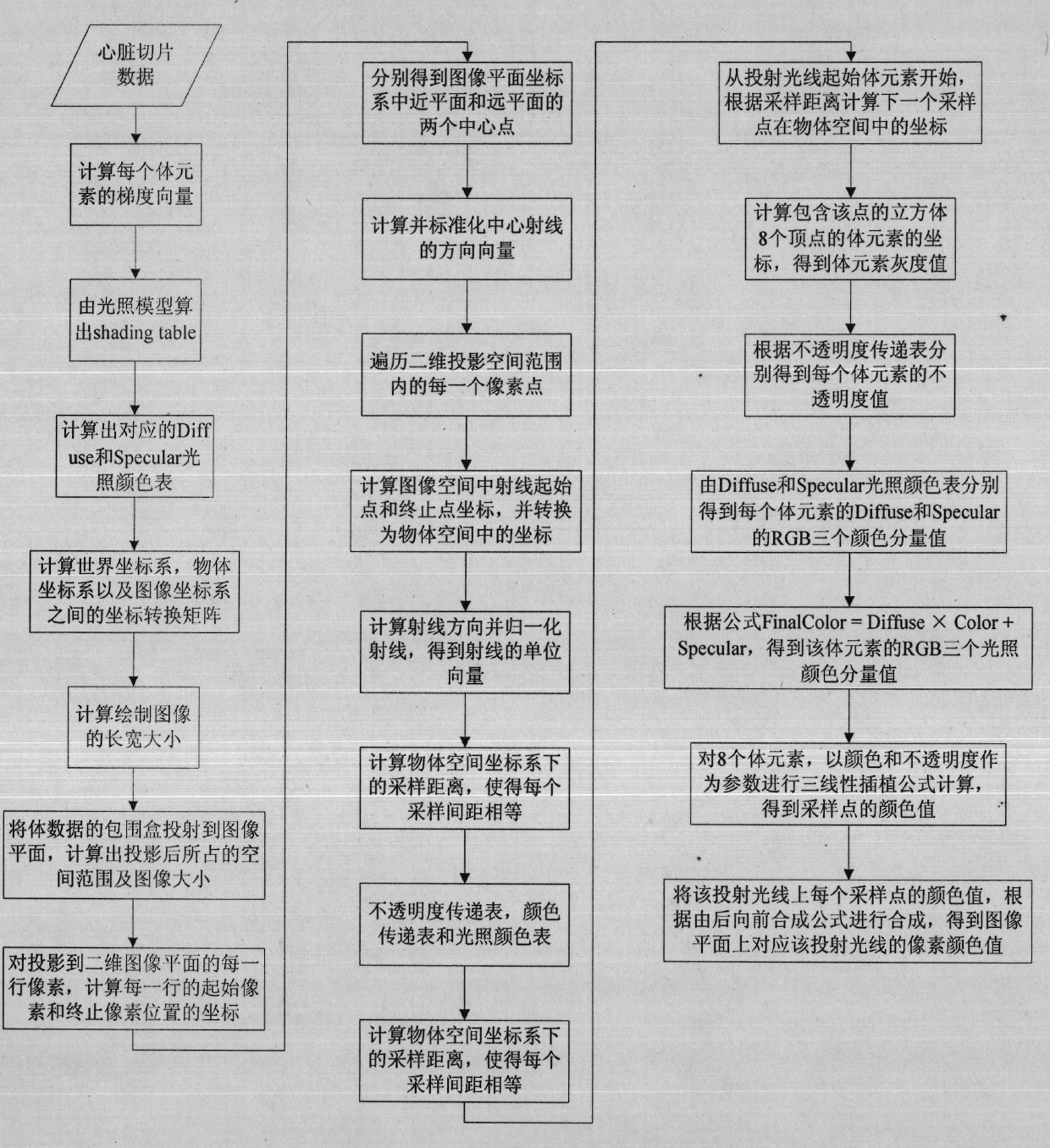Method for visualizing three-dimensional anatomical tissue structure model of human heart based on ray cast volume rendering algorithm
A tissue structure and volume rendering technology, applied in computing, 3D modeling, image data processing, etc., can solve problems such as the inability to realize the visualization of cardiac anatomy and tissue structure models
- Summary
- Abstract
- Description
- Claims
- Application Information
AI Technical Summary
Problems solved by technology
Method used
Image
Examples
specific Embodiment approach 1
[0015] Specific implementation mode one: according to the instructions attached figure 1 Specifically illustrate this embodiment, the visualization method of the three-dimensional anatomical structure model of the human heart based on the ray-casting volume rendering algorithm described in this embodiment, its specific process is:
[0016] Step 1: Obtain the heart 3D volume data set space S, and calculate the projection area L of the heart 3D volume data set space S on the image plane according to the ray-casting volume rendering algorithm;
[0017] Step 2: Starting from each pixel point of the projection area L, emit a projection ray T along the line of sight direction, and select a sampling point D in the direction of each projection ray T according to a set step size, and the sampling point D includes voxels and non-volume elements, and represent the volume elements with three-dimensional coordinates (x, y, z);
[0018] Step 3: During the process of each projected ray T pa...
specific Embodiment approach 2
[0024] Embodiment 2: This embodiment is a further description of Embodiment 1. In Embodiment 1, in Step 5, according to the ray-casting volume rendering algorithm, the method for calculating the opacity value and color value of each voxel is:
[0025] Step 511: Using the brightness attribute and gradient attribute of each voxel in the heart three-dimensional volume data set space S as parameters, construct an opacity transfer function, and obtain the opacity of each voxel in the heart three-dimensional volume data set space S Value, the gradient attribute includes gradient value and gradient direction;
[0026] Step 512: Construct a color transfer function, and obtain the color value of the voxel according to the gray intensity of the voxel in the heart tribody dataset space.
specific Embodiment approach 3
[0027] Embodiment 3: This embodiment is a further description of Embodiment 2. In Embodiment 2, in step 511, the brightness attribute and gradient attribute of each voxel in the heart three-dimensional volume data set space S are used as Parameters, to construct the opacity transfer function, the method to obtain the opacity value of each voxel in the heart three-dimensional volume data set space S is: construct the opacity transfer function
[0028]
[0029] Among them, f v Indicates the light intensity of voxels greater than or equal to the corresponding tissue gradient threshold in each tissue in the heart three-dimensional volume data set space S, the tissue includes ventricles and atria, if the gradient value is normalized to [0, 1], then The gradient threshold is 0.8, r represents the ith individual element and the light intensity is f v The maximum distance of voxel elements of , Indicates that the light intensity is I i The gradient value of voxel i, α i (r, f ...
PUM
 Login to View More
Login to View More Abstract
Description
Claims
Application Information
 Login to View More
Login to View More - R&D
- Intellectual Property
- Life Sciences
- Materials
- Tech Scout
- Unparalleled Data Quality
- Higher Quality Content
- 60% Fewer Hallucinations
Browse by: Latest US Patents, China's latest patents, Technical Efficacy Thesaurus, Application Domain, Technology Topic, Popular Technical Reports.
© 2025 PatSnap. All rights reserved.Legal|Privacy policy|Modern Slavery Act Transparency Statement|Sitemap|About US| Contact US: help@patsnap.com



